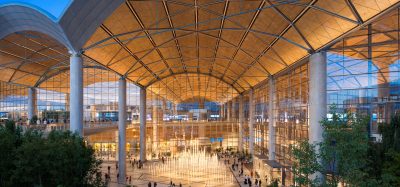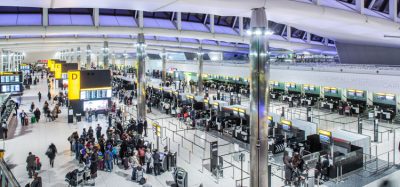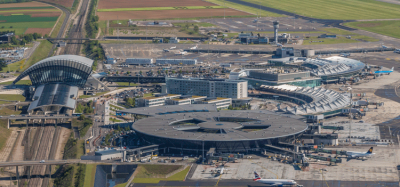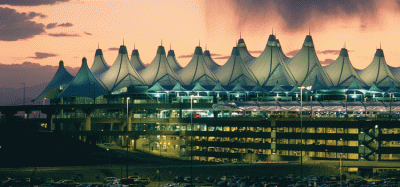A survey of airline pilots regarding fuel conservation procedures for taxi operations
Posted: 9 June 2010 | Regina Clewlow, Hamsa Balakrishnan and Tom Reynolds, Massachusetts Institute of Technology | No comments yet
Aircraft taxi operations are a significant source of energy consumption and emissions at airports. In 2007, an estimated 4,000 tons of hydrocarbons, 8,000 tons of nitrogen oxides and 45,000 tons of carbon monoxide were emitted through taxi-out operations at U.S. airports1. These pollutants contribute to low-altitude emissions, directly impact local nonattainment of air pollution standards, and represent an endangerment to human health and welfare.
Given increasing fuel prices and concern about aviation-related environmental impacts, airlines have implemented a number of practices to reduce fuel burn during ground operations.
Aircraft taxi operations are a significant source of energy consumption and emissions at airports. In 2007, an estimated 4,000 tons of hydrocarbons, 8,000 tons of nitrogen oxides and 45,000 tons of carbon monoxide were emitted through taxi-out operations at U.S. airports1. These pollutants contribute to low-altitude emissions, directly impact local nonattainment of air pollution standards, and represent an endangerment to human health and welfare.
Given increasing fuel prices and concern about aviation-related environmental impacts, airlines have implemented a number of practices to reduce fuel burn during ground operations. Such strategies include minimising use of the auxiliary power unit, controlling speed on the taxiway system, and reducing surface congestion and delays by holding aircraft at the gate. Researchers from the Massachusetts Institute of Technology’s International Centre for Air Transportation and the Partnership for AiR Transportation Noise and Emission Reduction conducted a survey of airline pilots at Boston Logan International Airport to assess their attitudes towards fuel conservation during taxi operations, and to document current fuel conservation practices, particularly singleengine taxi procedures.
This study found that the majority of pilots believe that fuel conservation is important; their motivation to conserve fuel is mainly driven by concerns about their airlines’ economic viability, as well as the environ – mental impacts of aviation. The study also found that single-engine taxiing is quite prevalent in current operations, especially arrivals, and identified some of the practical challenges surrounding such procedures.
Survey of pilots at BOS
With the cooperation of the Massachusetts Port Authority, MIT researchers conducted a web- and paper-based survey of pilots at BOS between August and December 2009. Links to the web survey were sent via e-mail to station managers and chief pilots for all airlines at BOS. Print copies, along with prepaid return envelopes and a drop-off folder, were also placed in the crew lounges. Participation in the survey was voluntary and the responses were anonymous. Sixty-four survey responses were received, representing most major carriers and one low-cost carrier; however, there was significant representation from 2-3 airlines. Forty-three of the respondents were captains, and 19 were first officers. Thirteen pilots indicated that BOS was their base airport. Half the pilots flew through BOS an average of 5.4 times a week, while the other half only flew through BOS an average of seven times per year. (The overall average was 2.8 times per month.) The average flight experience among the respondents was 22 years, with an average of eight years on their current aircraft.
Because the survey was conducted using a convenience sample, there is potential bias in the survey results: for example, those who are more concerned with fuel conservation are potentially more likely to have completed our survey. Nevertheless, the survey yielded useful responses regarding current fuel saving practices, as well as pilots’ experiences using single-engine taxi procedures.
General attitudes towards fuel conservation
More than 95% of pilots responding to the survey indicated that fuel conservation is important to them, with 80% indicating that it is very important, and 16% indicating that it is somewhat important. These results are higher than recent studies on conservation and the environment, including studies by the Pew Centre on Global Climate Change, Yale University, and George Mason University, which found that Americans’ support for conservation ranges from 55% to 80%.
However, as mentioned, our results may be biased as a result of our survey method.
Pilots indicated that motivating factors for fuel conservation included general economic and financial concerns, concerns about their airline’s profitability, and concerns about the environment and emissions. With fuel accounting for a significant portion of airline operating costs, it is understandable that pilots’ interests in fuel conservation are largely driven by economic concerns.
Taxi-out fuel burn estimates
Pilots were asked to estimate the average taxi-out time at their base airports, what they would consider an excessive taxi-out time, and the estimated fuel burn (assuming that all the engines were being used). The results are shown in Table 1. Also included in the table are the average taxi-out times for 2009, as reported by the Aviation System Performance Metrics database (ASPM).
Based on the survey results, pilots estimated an average (normal) taxi time to be roughly 20 minutes, and excessive taxi times ranged between approximately 30 and 90 minutes. The additional fuel burn due to excessive taxi-out times, as estimated by pilots, ranged between 225 and 500 kg per flight, depending on the airport. Applying information on the types of aircraft flown by survey respondents (combining data from the JP Airline Fleet Database and ICAO Engine Emissions Databank2), the taxi-out fuel burn for this survey group was estimated to be about 550 kg per flight.
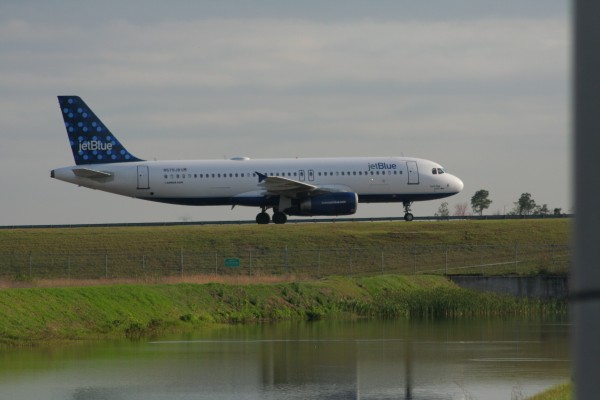

Pilots estimated an average (normal) taxi time to be roughly 20 minutes
Operational practices to reduce taxi-out fuel burn
Pilots were asked which fuel conservation strategies were encouraged by their airlines during taxi operations, besides single-engine taxi procedures (which were assessed in more depth in the survey). The most common strategies cited were:
- shutting down all engines during long delays
- shutting down, or controlling use of APUs
- minimising thrust and controlling speed on taxiways
- delaying engine start until engine use is necessary.
Pilots from international carriers noted that at most non-U.S. airports, delays are absorbed at the gate (instead of on the taxiway system) and that they often shut down all engines during gate holds. The majority of both U.S. and international pilots indicated that they shut down all engines during long delays, either at the gate or in airport holding areas. For example, at Boston Logan Airport, the local air traffic controllers often hold aircraft on certain taxiways, depending on the runway configuration being used.
Single-engine taxi procedures
One potential strategy to reduce aircraft surface emissions is the use of single-engine taxi operations; that is, when a single engine is shut down/left off during taxiing on a twinengine aircraft, or one to two engines are shut down/ left off on a four-engine aircraft. Prior research has indicated that single-engine taxiing can reduce surface emissions by up to 50%3, although the savings may be lower because of the need to have higher thrust from the engine that is being used, and the fuel needed for cross-bleed starts. The survey respondents thought that single-engine taxiing would result in a 37% reduction in fuel burn, on average.
A majority of survey respondents (70%) indicated that their airlines encourage them to use single-engine taxi procedures, with 40% indicating that they are strongly encouraged to use them, and 31% indicating that they are encouraged. When asked further about the frequency of single-engine taxi use, it was found that these procedures were widely used on arrivals (52% of pilots reported using them more than 75% of the time), while they were infrequently used on departures (54% of pilots reported using them less than 10% of the time).
Operational challenges associated with single-engine taxiing
Although single-engine taxiing may appear to be a simple and effective method to reduce fuel burn during surface operations, there are a number of perceived problems associated with the procedure. The four main challenges identified by respondents were:
- excessive thrust and associated issues
- maneuverability problems, particularly related to tight taxiway turns and weather
- problems starting the second engine
- distractions and workload issues.
Given that there are maneuverability concerns associated with single-engine taxi procedures, we asked pilots if there are certain conditions under which single-engine taxi procedures were not used. As expected, many pilots indicated that they would not use singleengine taxi procedures with low visibility or tight taxiway turns (due to problems turning into the operating engine). However, nearly half of the pilots surveyed indicated that they would use single-engine taxiing on wet taxiways.
Cold starts did not appear to be a significant factor affecting use of single-engine taxi procedures. A majority of pilots (67%) indicated that if they were departing in the morning after their aircraft had been sitting idle overnight, it would not affect their decision to use single-engine taxiing.
Survey respondents were asked to list any other conditions when they would not use single-engine taxi procedures. The most frequent responses were:
- ice or snow
- high gross weight
- short taxi-times, uncertainty of departure time and position in the takeoff queue, and changes in runway assignments
- hot days on asphalt surfaces.
Engine shutdown procedures
Based on their airline and equipment flown, a majority of pilots (80%) shut down or leave off a specific engine when utilising single engine taxi procedures. Although many pilots cited ‘procedure’ or ‘habit’ as their primary reason for shutting down or leaving off a specific engine during single engine taxiing, it is also driven by which engines power essential aircraft systems such as hydraulics and brakes.
Other key considerations include which side the cargo doors are on, aircraft cooling, and the taxiway configuration at the airport (e.g. how many right or left turns will the aircraft need to make during taxi-out or taxi-in).
On departures, pilots wait until an average of 4.6 minutes before takeoff before starting the last engine, and 3.1 minutes after landing to shut down an engine.
Runway configuration issues
One of the key reasons that pilots might not use single-engine taxi procedures is that they might anticipate a short taxi-out or taxi-in time. Most pilots indicated that in order to consider using single-engine taxiing for arrivals, the expected taxi-in time would have to exceed 10 minutes (on average); for departures, they would need to expect their taxi time to exceed 20 minutes. For example, at Boston Logan Airport, pilots indicated that they do not typically use single-engine taxi-out procedures to runways 9, 4L, and 15R, which are closest to the gates. The most common reason cited for not using single-engine taxiing at BOS was the proximity of the gate to the runway, and the resultant short taxi time. However, there were other reasons cited for not using the procedure, including:
- length of queue
- complex layout
- busy taxiway areas.
Advanced queue management strategies and a willingness to wait
Researchers at MIT are currently investigating advanced queue management strategies that would minimise surface fuel burn and emissions. Such strategies might hold aircraft at the gate or in holding areas in order to minimise taxi time, while also aiming to minimise delay. When pilots were asked whether they would be willing to wait at the gate if their position in a takeoff queue could be guaranteed, 61% indicated that they would definitely be willing to wait, and an additional 16% indicated that they would probably be willing to wait.
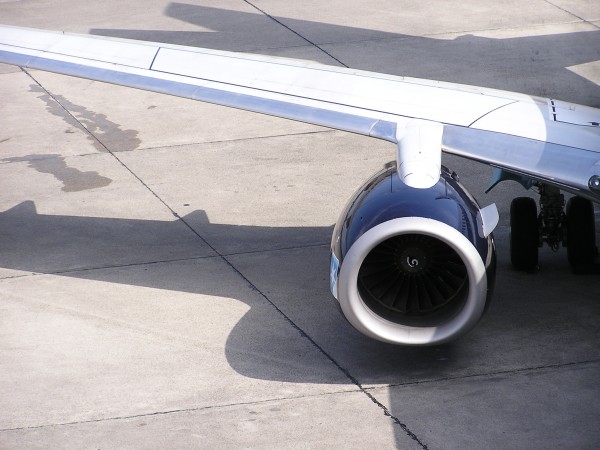

On departures, pilots wait an average of 4.6 minutes before takeoff before starting the last engine
Conclusions
A majority of pilots responding to this survey believe fuel conservation is an important issue, and that this belief is primarily motivated by concerns about the cost of fuel, company profitability, and the impact of aviation on the environment. A majority of airlines appear to encourage single-engine taxi procedures, as well as a variety of other fuel conservation measures.
The survey found that a majority of pilots used single-engine taxi procedures on arrival at airports, while a fewer number of them used single-engine taxi on departures. Key reasons cited for not using these procedures were either safety-related, or associated with practical reasons (such as short taxi distances for some runways at BOS). Single-engine taxi procedures differed between aircraft in terms of which engines were left off, and for how long. Even though this survey was based on a convenience sample, it provided some useful insights regarding airline pilots’ attitudes to fuel consumption, as well as information on the use of fuel conservation measures such as single-engine taxiing.
This research was conducted under the auspices of the Partnership for AiR Transportation Noise and Emissions Reduction. PARTNER is a nineuniversity research organisation, and an FAA/ NASA/Transport Canada-sponsored Centre of Excellence. PARTNER fosters breakthrough technological, operational policy, and workforce advances for the betterment of mobility, economy, national security, and the environment. Also participating was the International Centre for Air Transportation, which works to improve the safety, efficiency and capacity of domestic and international air transportation and its infra – structure. Both organisations are headquartered at the Massachusetts Institute of Technology.
References
1. H. Balakrishnan, I. Deonandan, and I. Simaiakis. Opportunities for reducing surface emissions through airport surface movement optimisation. Technical report, Massachusetts Institute of Technology, 2008. Technical report Number ICAT-2008-7.
2. Bucher and Company, JP Airline Fleets International (2006/2007), 2006; ICAO Engine Emissions Databank, Issue 15, 2008.
3. V. Kumar, L. Sherry, and T. Thompson, “Analysis of Emissions Inventory for ‘Single-Engine Taxi-Out’ Operations,” Proceedings International Conference on Research in Air Transportation (ICRAT-2008), Fairfax, VA, February 2008.
About the Authors
Regina Clewlow
Regina Clewlow is a PhD student in the Engineering Systems Division at MIT and a PARTNER research assistant. She has worked on PARTNER projects 21 (airport surface movement optimisation) and 31 (impacts of cap-and-trade policies in the aviation sector). Her other research interests include examining competition and cooperation between high-speed rail and aviation, and the environmental impacts of high-speed transportation. She holds a BS and ME from Cornell University.
Hamsa Balakrishnan
Hamsa Balakrishnan is the T. Wilson Career Development Assistant Professor of Aeronautics and Astronautics and of Engineering Systems at the Massachusetts Institute of Technology. She received a B.Tech in Aerospace Engineering from the Indian Institute of Technology in 2000 and a PhD in Aeronautics and Astronautics from Stanford University in 2006. Prior to joining MIT in January 2007, she was a researcher at the University of California, Santa Cruz and the Terminal- Area Air Traffic Management Research Branch of NASA Ames Research Center. Her research interests include algorithms for the scheduling and routing of air traffic, techniques for the collection and processing of air traffic data, and mechanisms for the allocation of airport and airspace resources.
Tom G. Reynolds
Tom G. Reynolds has joint research appointments with MIT’s Department of Aeronautics and Astronautics and Lincoln Laboratory. He has expertise in air transportation systems engineering, with particular focus on air traffic control benefits assessment and strategies for reducing environmental impacts of aviation. He obtained his Ph.D. in Aerospace Systems from the Massachusetts Institute of Technology in 2004.
The International Airport Summit is open for registration!
Date: 19 – 20 November 2025
Location: JW Marriott Hotel Berlin
At our flagship event of the year, we will dive into the future of airport operations, with expert-led sessions on passenger experience, innovative smart technologies, baggage handling, airside operations, data, security, and sustainability.
This is where global airport leaders come together to share insights, challenges, and real-world solutions.
Limited complimentary passes are available for eligible professionals – first come, first served!



